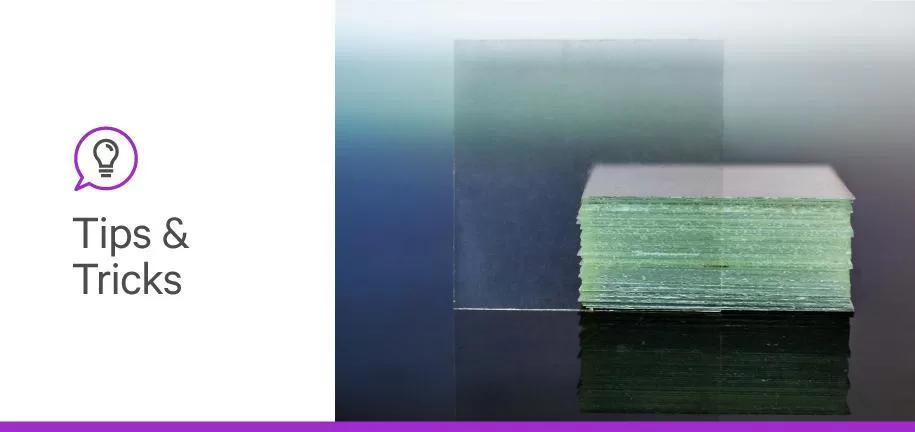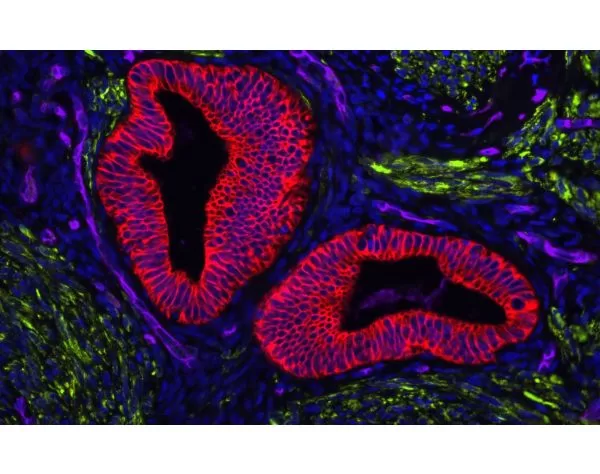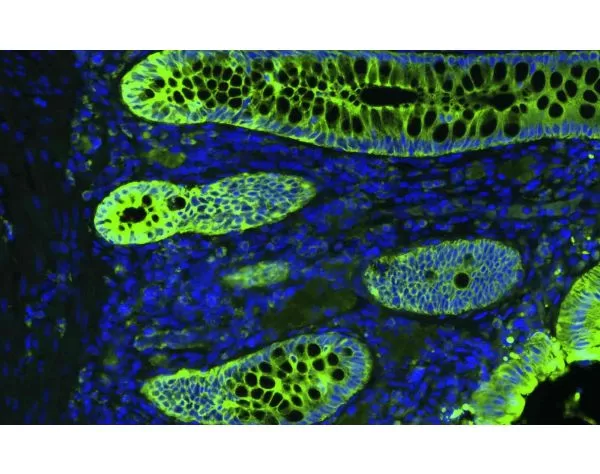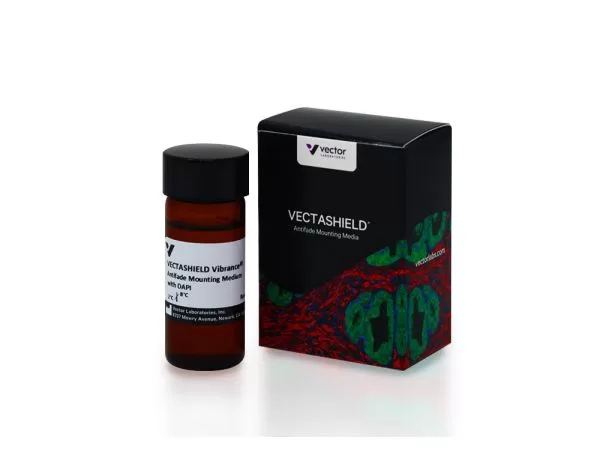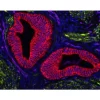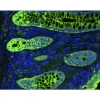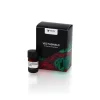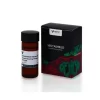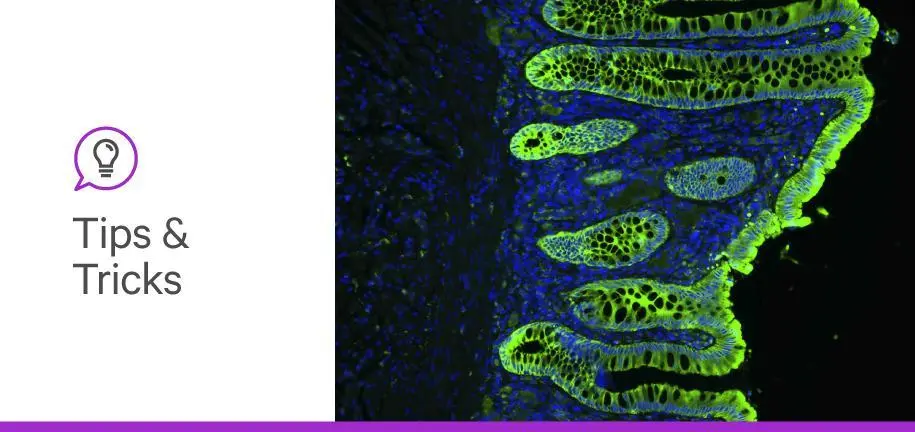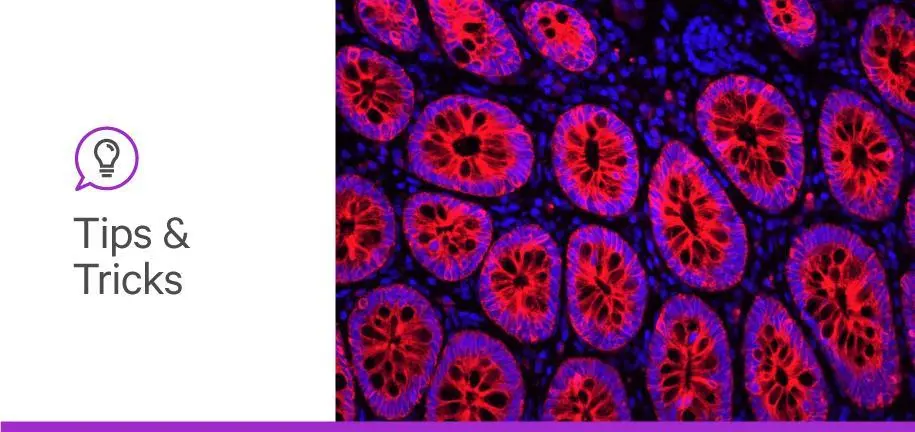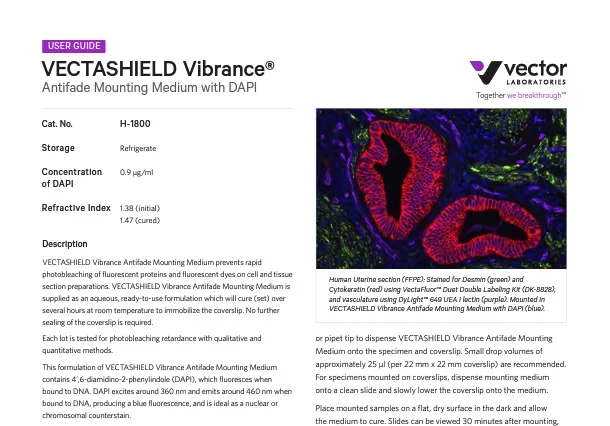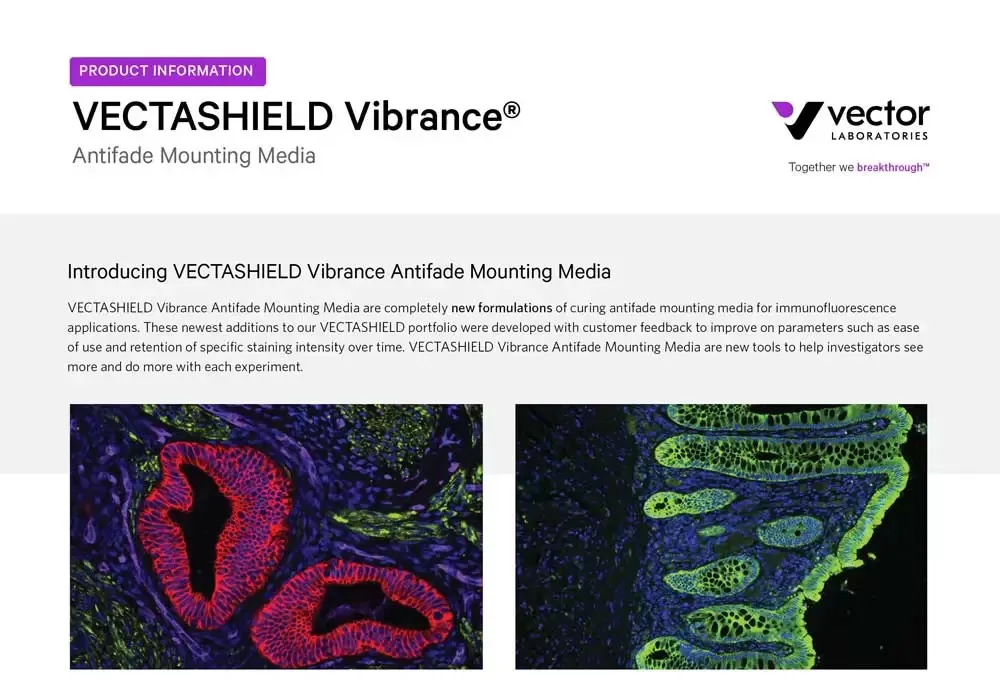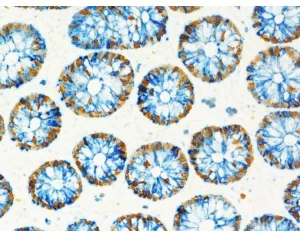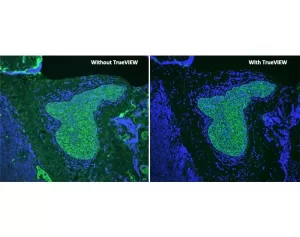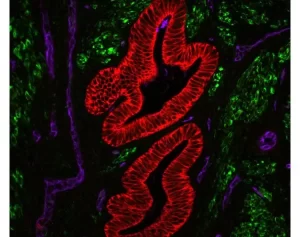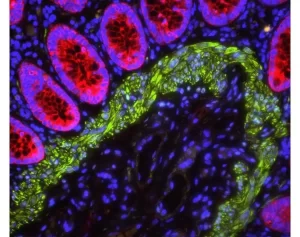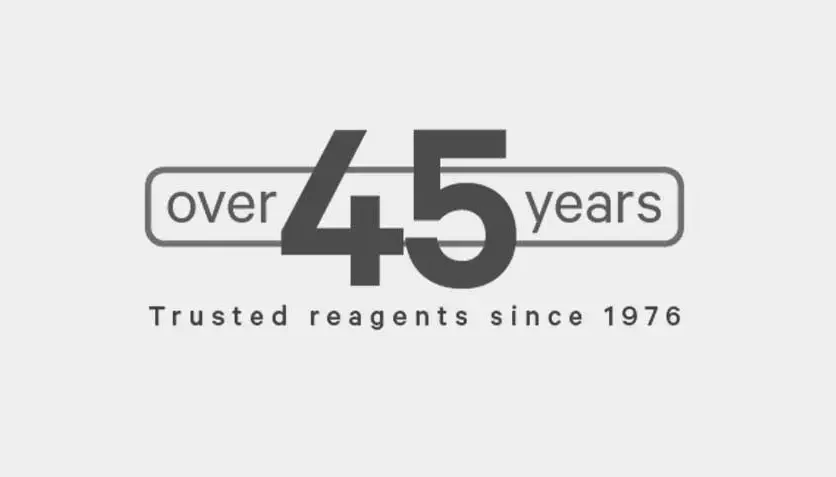Technical Information
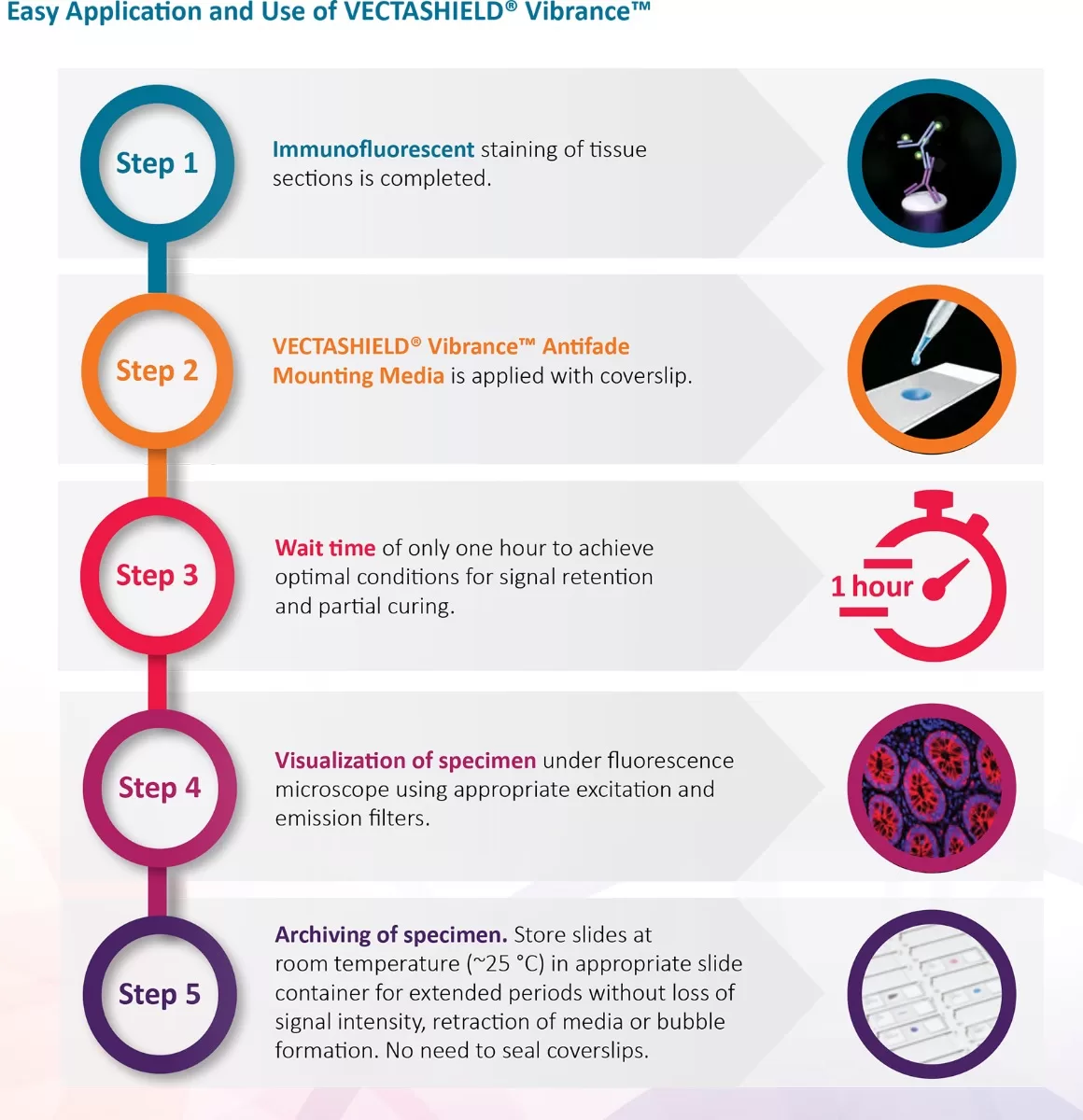
VECTASHIELD Vibrance Antifade Properties
VECTASHIELD Vibrance has outstanding antifade properties, acoss the spectrum – even under far-red wavelengths – and it is compatible with most commercially available fluorophores.
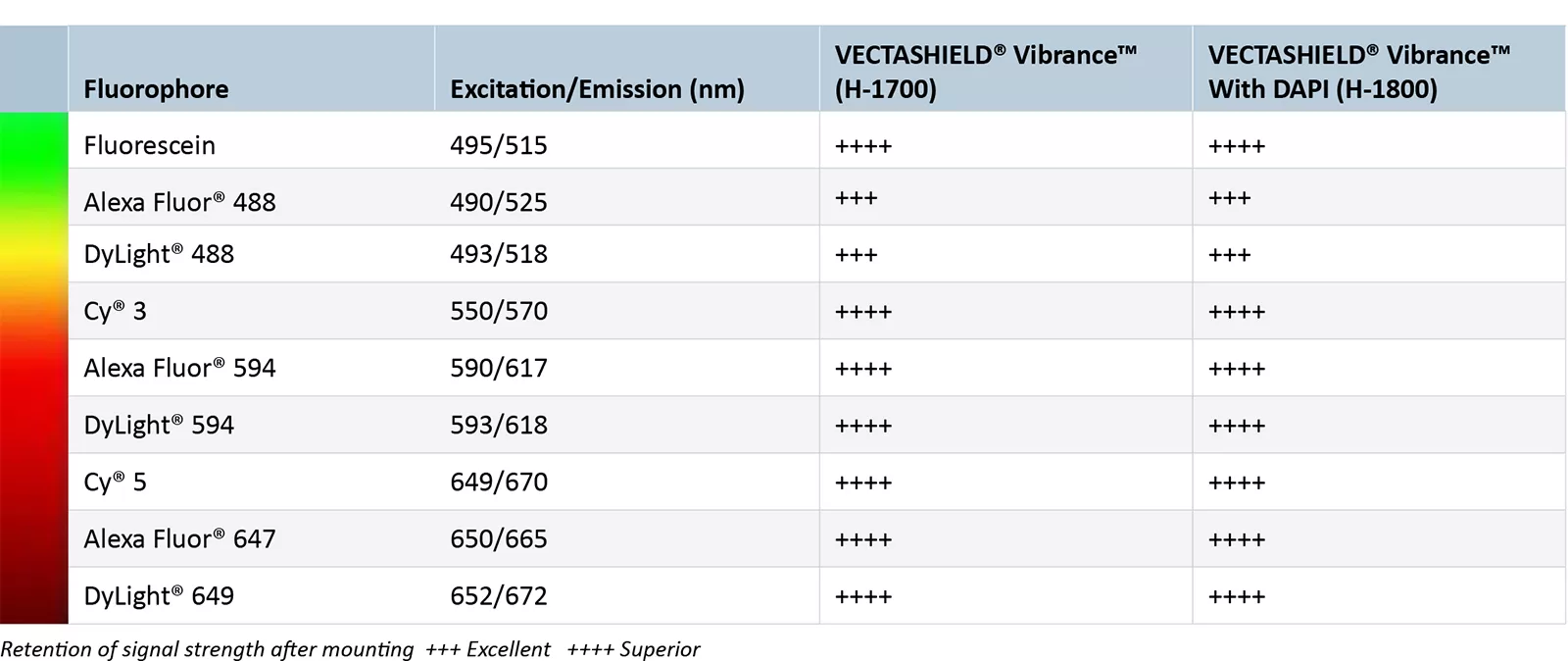
Viewable in as Little as One Hour After Mounting – No Need to Wait 24 Hours
Competitor workflows for immunofluorescence recommend that slides be viewed 24 hours after mounting. VECTASHIELD Vibrance Mounting Media, however, allow same-day viewing. Accelerate discovery without sacrificing signal intensity or retention.
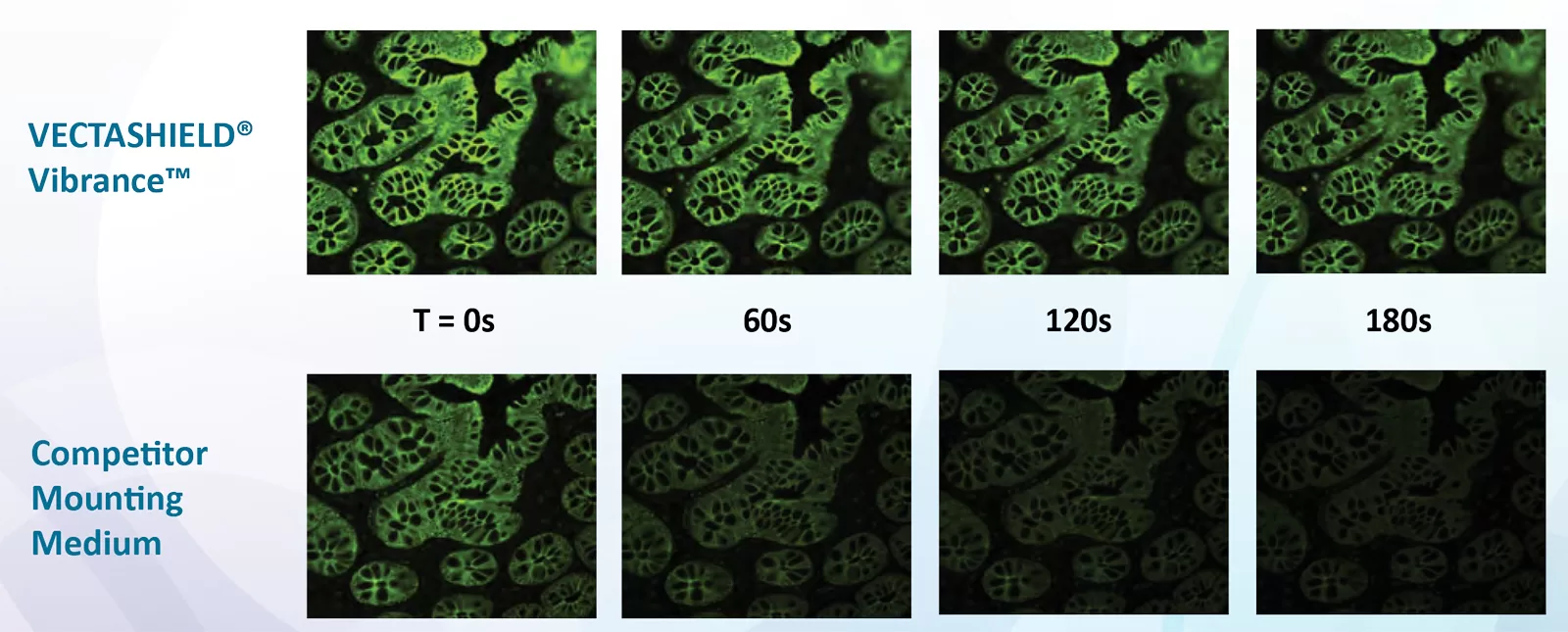
Above image: Improved retention of fluorescence with VECTASHIELD Vibrance Mounting Medium. Serial sections of human colon tissue (FFPE) stained for cytokeratin (mouse primary antibody AE1/AE3) and detected with fluorescein conjugated horse anti-mouse IgG secondary antibody (FI-2000). One hour after mounting with either VECTASHIELD Vibrance (top row) or a competitor mounting medium (bottom row), the sections were imaged at the intervals indicated. Note retention of fluorescent signal for section mounted with VECTASHIELD Vibrance Mounting Medium.
Extended Archiving of Mounted Sections at Room Temperature
Archiving fluorescently stained sections at room temperature often leads to signal reduction and dessication of the specimen. Slides mounted with VECTASHIELD Vibrance Medium, however, can be stored for weeks at ambient temperature, in standard slide boxes, with no loss of specific signal intensity or specimen integrity. The stabilizing effect of VECTASHIELD Vibrance Mounting Medium provides greater flexibility for imaging and storing fluorescently stained samples.
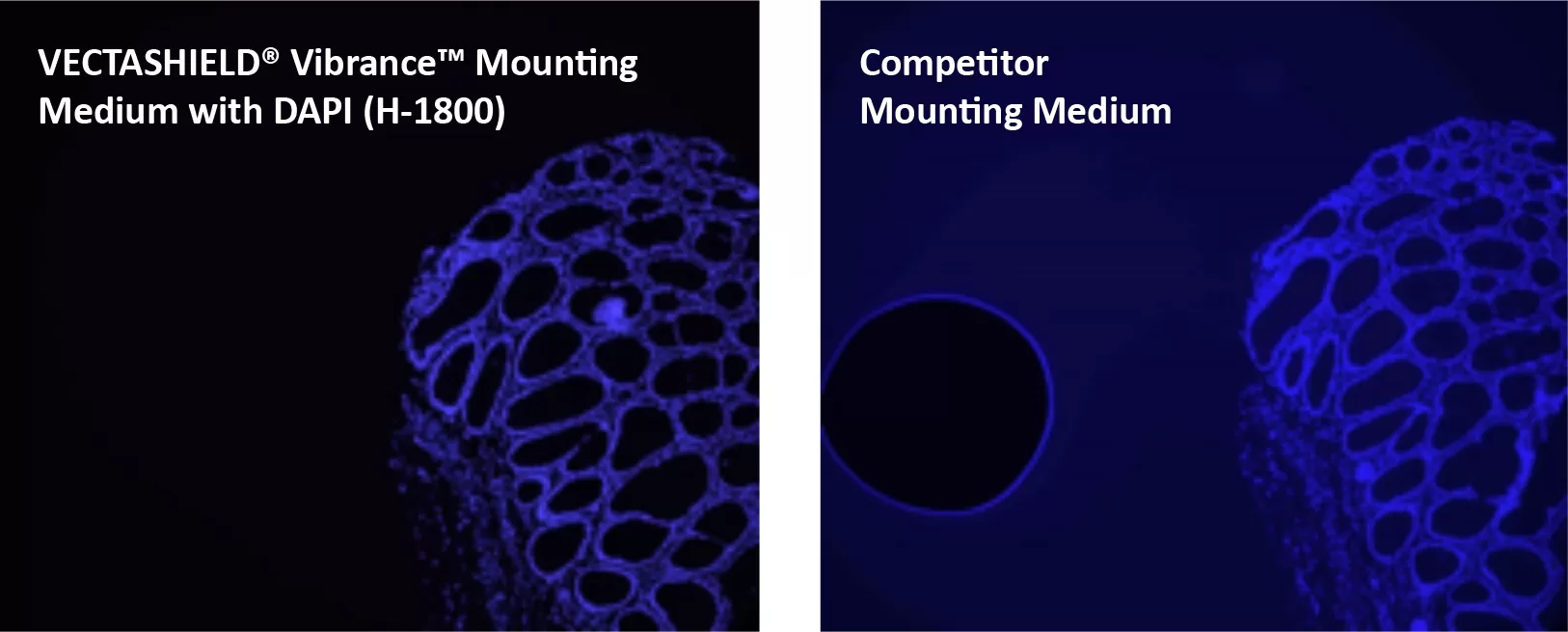
Archiving fluorescently stained sections at room temperature often leads to signal reduction and desiccation of the specimen. Slides mounted with VECTASHIELD Vibrance Medium, however, can be stored for weeks at ambient temperature, in standard slide boxes, with no loss of specific signal intensity or specimen integrity. The stabilizing effect of VECTASHIELD Vibrance Mounting Medium provides greater flexibility for imaging and storing fluorescently stained samples.
With no specimen obscuring retraction or bubble formation
Another problem commonly observed in immunofluorescence staining is the formation of bubbles over time, under the coverslip, or the shrinking (retraction) of the media. This phenomenon detracts from the overall quality of the sections and can obscure specific staining. The unique formulation of VECTASHIELD Vibrance Mounting Medium provides a uniform sheet of medium under the coverslip, with essentially no bubble formation or retraction—even after many weeks of storage at room temperature.
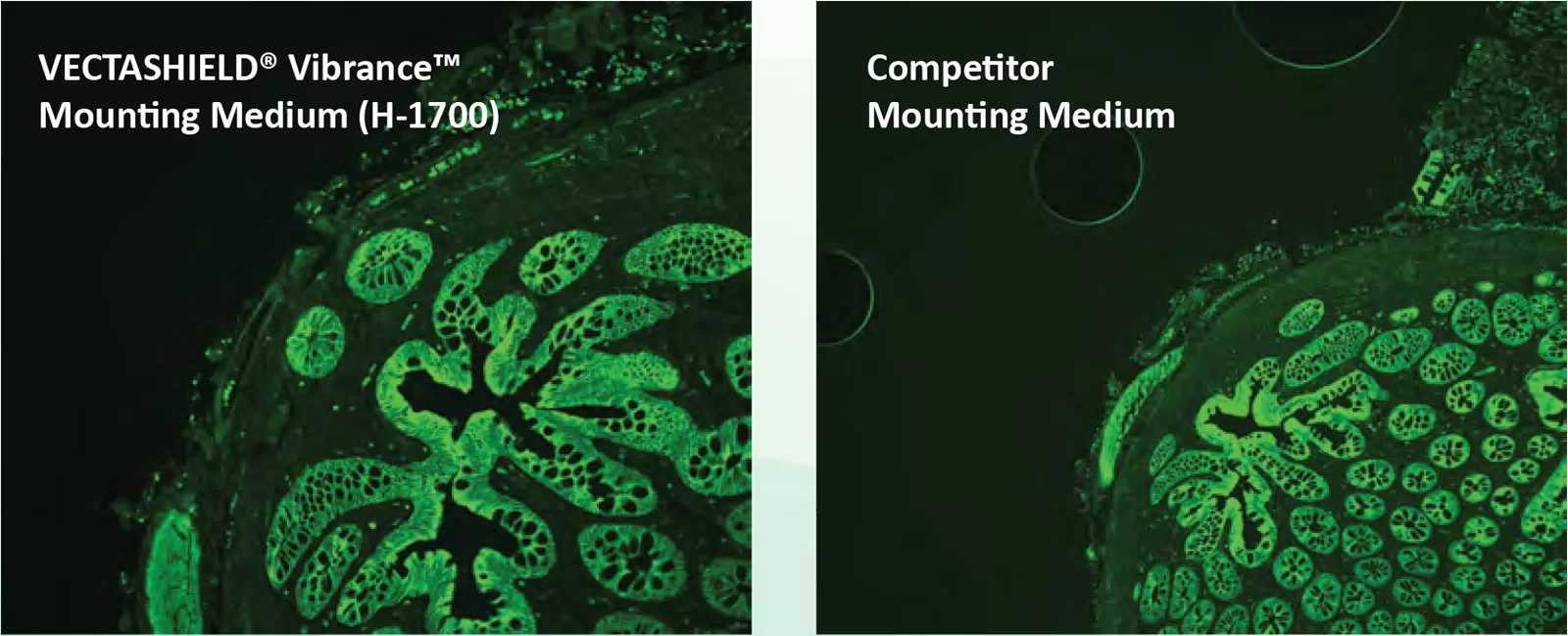
Serial sections of human colon tissue (FFPE) stained for cytokeratin (AE1/AE3, mouse primary) followed by Alexa Fluor™ 488 anti-mouse IgG secondary antibody. Sections were mounted with either VECTASHIELD Vibrance Mounting Medium (H-1700, left image) or competitor mounting medium (right image) stored at room temperature for two weeks, and then imaged.
Note the absence of bubbles and background in green spectrum in left image (VECTASHIELD Vibrance Mounting Medium) compared with right image, after two weeks at room temperature.
Summary of VECTASHIELD Vibrance Advantages Over Competitor Mounting Media
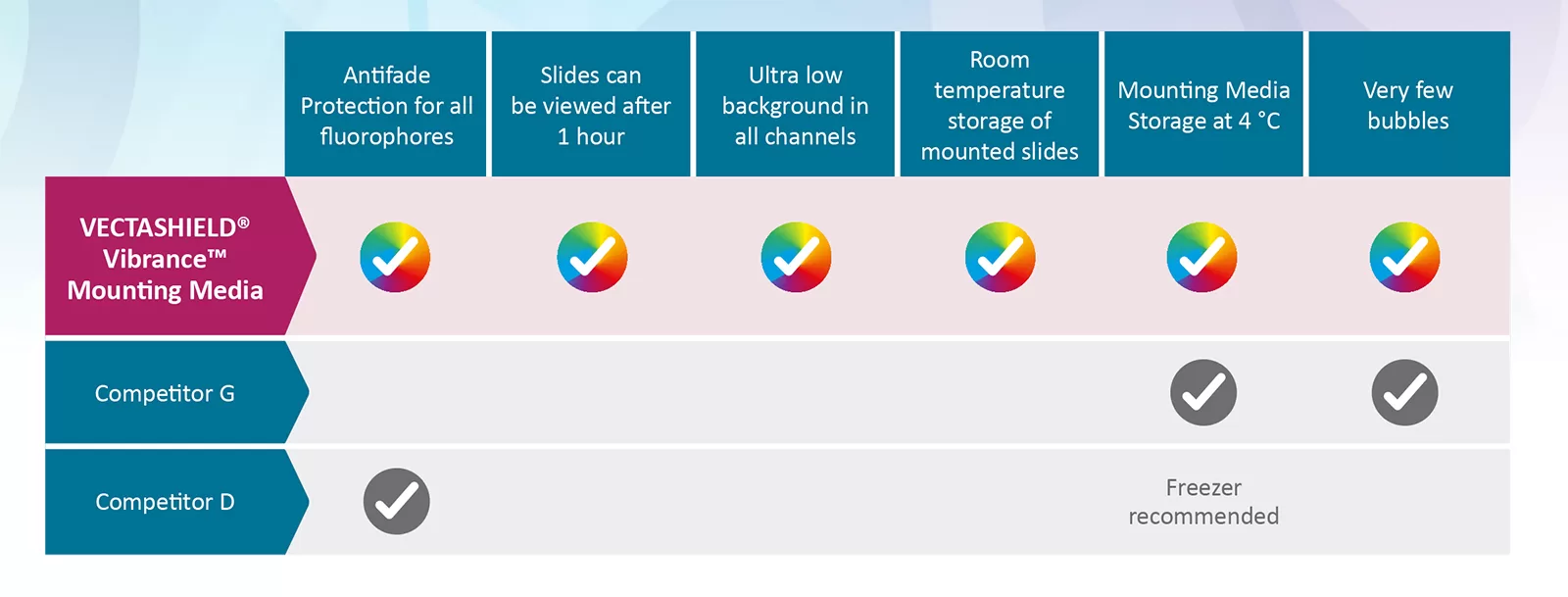
Check out this video on coverslipping tips for immunofluorescence slide mounting
